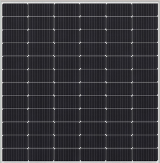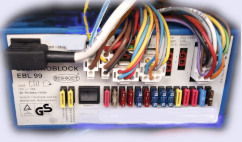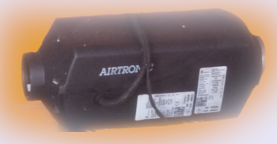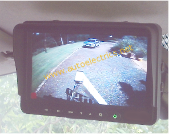
Motorhome Autoelectrical Installation
Motorhome Campervan & Leisure Vehicle Autoelectrical in Shropshire & Mid Wales
We provide a full range of services and parts for Motorhome and Camper van users including :
Autoelectrical fault tracing
Wiring of additional lights
Split Charge Auxilliary Battery for onboard power
Assistance with vehicle conversions
Electrical power generation equipment for motorhomes and camper vans
Alternators

The Alternator functions as a generator to charge both the vehicle engine battery and auxlliiary leisure battery systems.
We supply of a wide range of motorhome alternators and alternator repair parts to suit your motohome requirement.
On holiday and broken down ? Callout service available for motorhome alternator fitting in Shrewsbury Shropshire and local.
Inverters
Power inverters are fitted to motorhomes to step up voltage & convert input power from the 12 volt (12v) dc battery to 240v alternating current (ac) mains type output for supply of domestic accessory equipment which normally operates at house domestic mains voltage. Selection of a suitable inverter specification introduces many factors related to power supply capability of vehicle batteries, charging system, cabling, and intended periods of use.
Generators
Additional On board or Stand alone site generators can be used to provide electrical power supply for the motorhome. Low noise versions should be considered.
Motorhome Leisure Battery Charging
Motorhome Battery Banks
It is important to keep motorhome leisure battery banks charged and in good order.
Additional auxiliary leisure batteries may be used as an off-grid power supply for both
Vehicle capacity, circuit load, and intended usage will determine the requirement for leisure battery bank capacity
Parallel Battery Operation
Starter battery and auxilliary battery are connected with heavy duty cabling via a battery isolator switch, which when turned on allows the auxilliary battery to link to the starter battery to provide extra power to the starter motor allowing cold starting assistance.
Battery charging via 240v Hookup
A Hookup cable connects mains site power (240v a.c) to the motorhome 'blue plug' 16A (BS4343) connector. The 240v AC mains input provides power supply to a multi-stage battery charger with DC output around 13 volts connected to 12v leisure battery bank. Failure of the battery, battery charger, or wiring may cause low leisure battery voltage. The leisure battery voltage may be indicated on a panel gauge inside the motorhome or can be checked using a multimeter.
Split Charge Ancillary Battery Systems
The basic motorhome split charge system will charge batteries whilst the vehicle engine is running using power generated by the vehicle alternator.
Auxiliary leisure battery banks are recharged by the engine driven alternator via wiring
possibly direct to the back of the alternator to a second B+ terminal, or from a convenient point such as the engine starter
battery terminals via either switchgear or a dc-dc battery charger.
Voltage Sensitive Relay (VSR) Split Charging System
Vehicle starter battery (1) is linked to the auxilliary battery bank (2) via an automatic solenoid switch or voltage sensitive relay (VSR).
When the engine is off (stationary), the VSR disconnects the second battery to prevent current draw from the auxilliary battery.
Firstly, this ensures the engine starter battery retains enough power to start the engine after periods when the motorhome domestic equipment such as lights have been used.
Secondly, because the wiring system between engine starter battery and secondary batteries often uses smaller cable than the heavy cable used between engine starter battery
and starter motor, disconnection of the leisure battery protects auxilliary cabling from overload.
After the engine starts and the alternator starts to charge, a rise in starter battery voltage is detected, VSR switch contacts close allowing
electrical charging current to flow from the vehicle alternator to the auxilliary battery. VSR units available in 12v and 24v versions
VSR part nos
HC161059 (12v 160A) HC161060 (24v 160A) HC161955 (dual version 12v or 24v 140A)
HC161128 (12v 200A)
DC-DC battery to battery charger
A more advanced method of recharging leisure battery banks with a split charge system involves use of a
DC battery to DC battery charger to regulate charging current. DC-DC chargers vary in specification, some with programmable features to enable recharge of
specialist battery systems.
Auxilliary battery charging system using blocking diode
A diode acts like an electrical non return valve. Battery charging current is allowed to pass
from the vehicle alternator to the auxiliary leisure battery only.
The blocking diode prevents reverse current flowing back from the auxiliary battery to the starter battery during engine start.
Solar Panel Leisure Battery Charging System

Additional battery charging can be provided by fitting a solar panel battery recharge system.
Solar panel systems usually require an additional (MPPT) voltage regulator charge controller.
More information can be found on our solar panel web page
Modular Electrical System

Modular electrical systems such as those by Electroblock and Sargent are fitted to many motorhomes incorporating several circuit functions in to one electronic unit including:
The modular charging and distribution board may be remotely switched from a seperate switch control panel.
Battery Guard
Battery guard equipment can be fitted to ensure vehicle batteries stay above a preset voltage level by providing automatic battery disconnection. Battery guards are particularly useful when vehicles are being put in to short term storage.
Starter Motors for Motorhome engines
Supply of a range of starter motors to fit Diesel and Petrol engines in motorhomes and campervans based on
Ford Transit
Fiat Ducato
Mercedes Sprinter & Vito
Renault Master
Vauxhall Vivaro
Volkswagen Transporter, T2, T4, T5, T6, Crafter
Autotrail, Adria, Hymer, Swift leisure vehicles.
Motorhome and Camper Van Climate Control
Night heaters

We have night heater diagnostic equipment for various makes of motorhome and campervan (nightheater) blown air heating systems including Eberspacher Airtronic and Webasto Airtop 2000 and may also be able to assist we sourcing components. We do not repair the cheap chinese diesel heaters.
Low auxiliary battery voltage can cause faults with a nightheater preventing operation.
Motorhome Air Conditioning and Cooling
A range of air conditioning equipment is available for motorhomes and leisure vehicles including factory fit using engine driven air conditioning systems or standalone roofmount air conditioner units.
FGAS qualified engineer providing a range of motorhome air conditioning services including air conditioning test, repairs and regas.
Motorhome Computerised Diagnostics
Many motorhomes are built on a converted van chassis.
Our Specialist computerised diagnostic equipment is capable of vehicle computer modules on many motorhome and camper van electronic systems
including engine management, airbag, and antilock braking systems *subject to specific software compatability.
More information can be found on our vehicle diagnostics web page
Audible Reverse Warning Systems
Reversing warning bleeper Installation
Motorhome MOT preparation
Despite vehicle size, many motorhomes and motor caravans fall under the class 4 MoT test group which is the same category as for passenger cars.
The MoT test centre must be able to accommodate the size and type of vehicle with regard to workshop space, equipment and qualification.
A full list of items to be checked can be found in the relevant DVSA MoT testers manual downloadable from the .Gov website.
Key points are condition and security of components affecting vehicle safety including
Drivers controls and vision including windscreen, wipers and washers
Obligatory lights
including sidelights, tail lights, no. plate lamps, marker lamps, dip and main beam headlights, stop lamps, direction indicators, hazard warning, reverse lamps depending on date of first use. The wiring to motorhome lights may be difficult to access due to the first and second fix construction techniques involved in motorhome body building.
Brakes
including parking brake (handbrake and cables) and service brake (footbrake) condition and operation, hydraulic systems, master cylinder, brake pipes, wheel cylinders and brake calipers, brake friction linings (barke pads and brake shoes)
Steering
Security, condition, operation of steering wheel, steering column, couplings, power steering, steering rack, track rods and track rod ends, kingpins and stub axles.
Body and chassis components
Wheels and tyres
Condition, Correct size and type of tyres, tread depth (1.6mm min), presence and security of wheel nuts, wheel bearing condition.
Bodywork
Condition of body panels and bumpers for security and sharp edges. Operation of doors and door locks.
Motorhome Habitation Inspection
A habitation check is a seperate inspection which is not currently part of the vehicle MoT test.
Habitation inspection checks include observation of condition of equipment linked to the living quarters of the vehicle including
electrical and liquid petroleum gas (LPG) equipment.
Autoelectrical engineers get involved with fault tracing and repairs of certain 12v & 24v equipment.
Van Conversions - a few notes
Some people self-convert a standard panel van in to a camper van by adding features such as
Insulation materials - possibly earthwool fitted between interior and exterior body panels.
LED interior lighting with low power consumption
Bed
240v mains hook up point via 16 Amp supply, with Residual current device (RCD)
240v to 12v battery charger
Auxilliary battery
Split charge system - battery to battery charger , voltage sensitive relay (VSR) , battery isolation switch.
12 volt power distribution board with fuses or circuit breakers.
12v to 240v Inverter
Night heater
Wood burning stove (- one of our plumber customers has fitted a compact wood burning stove in his camper van )
Sink with 12 volt water pump
Gas Cooker
Gas bottle storage compartment
Microwave
Kettle
Cool box
Fridge - 3 way fridge which may be run on gas, 12v electric, or mains. Requires ventilation.
Toilet
Shower
Interior storage cupboards
Safe
Side Awning
Reversing camera kit
Mobile Digital Video Recording (DVR) system.
WiFi systems for mobile internet
Television & Satellite system
USB sockets
Seperate roof mount air conditioning unit
Additional exterior lighting
Elevating roof conversion kits
Roof racks
Access ladders
Security locks
Rodent deterrant - Rodents can be problematic to motorhomes. We have come across several vehicles where rodents have chewed through pvc insulation and wiring cables.
A good recommendation is to carefully plan any proposed van conversion. Electrical wiring is often carried out in stages during a vehicle build. First fix installation may require running cabling before panelling is fitted. While second fix involves connection of equipment. Third stage can involve inspection & certification as required.
Specially designed cabinet kits are available for specific vehicles.
Some additional Important Safety Features for camper vans and motorhomes
Battery Isolator Switch
Electrical circuit breakers, fuses, and rcd
Smoke Alarm - we always recommend fitment of smoke and Carbon monoxide detector alarms in camper vans, motorhomes, and ambulances
Fire extinguisher
First Aid Kit
Check operation of all entrance doors and exits.
Check adequate ventilation.
Motorhome Camping in Shropshire & Mid Wales
Shropshire & Mid Wales has a wide range of short stay camping facilities,
Diesel Fuel Injection Equipment
Fuel hose
Filters
Pumps
Injectors
Diesel Glow Plugs and Preheat timer Relays

